 Rich blue Ceylonese gemstones are the most well- known and valuable variety of sapphire, and the standard against which other blue gems are measured.
Rich blue Ceylonese gemstones are the most well- known and valuable variety of sapphire, and the standard against which other blue gems are measured.
However, paler versions are still in high demand and the teal hue – a mix of blue and green – has also soared in popularity in recent years, with premium specimens sourced from Australia, Nigeria, and Montana in the US.
Sapphire is corundum; an allochromatic mineral that derives colour from chemical impurities in the crystal structure. These impurities absorb specific parts of the light spectrum, and the remaining light reflected to the eye gives colour to the gemstone.
Blue is caused by traces of titanium and iron; the more iron present, the darker the stone. Green sapphires also owe their colour to iron.
Sapphires are often heat-treated to remove silk inclusions, thus enhancing clarity and richness of colour.
Like sapphire, the vibrant colour of emerald – a form of beryl – has been adored from ancient times.
Created by trace impurities of chromium and vanadium, the intense green colour is the most prized. The price drops when accompanied by a bluish tinge, and continues to devalue further when coloured a yellowish tinge from iron impurities.
When the colour of beryl is too light to be called emerald, it is termed ‘green beryl’.
Colombia remains the major source of emeralds, retaining the best reputation and usually commanding a price premium.
However, emeralds can be sourced from many parts of the world, including Russia (the Urals have produced emeralds for more than 100 years), Zambia, Brazil, Zimbabwe, Afghanistan and Ethiopia; some emeralds from these mines will rival the best Colombian emeralds.
Emerald typically have many inclusions; the French say they have a jardin (garden) inside them. The inclusions also make emeralds a more brittle gemstone, often confused with it being soft.
To help improve their clarity and colour, emeralds are treated in several ways. They are usually “oiled” at the mines – a process that uses oil to fill the cracks and inclusion spaces in a technique practised for centuries.
Aquamarine is another variety of beryl, and owes its delicate blue-green palette to ferrous iron.
Loved for its icy sky-blues and cool sea greens, its name originated from the Latin aqua marina, meaning ‘water of the sea’.
Available in large, eye-clean gemstones, aquamarine’s colour and higher carat weights has made it popular, although deeper shades command a higher price. Most commercially-available aquamarines are heat-treated to remove yellow tones and produce a more desirable blue hue.
Maxixe beryl is the name given to blue beryl with a very dark tone that is almost unnatural, unlike the softer blues of aquamarine.
The colour is known to fade from deep blue to a yellowish tone in sunlight and strong artificial light or heat in a reasonably short time.
The maxixe beryl’s colour is caused by a nitrate trace compound. Some maxixe-type beryl is also on the market with colour resulting from a carbonate trace compound.
Demantoid, tsavorite and tanzanite
Another gemstone of many colours is garnet, and the standout in the andradite branch of garnet is vibrant green demantoid. With dispersion greater than diamond and a striking, rich green, hue demantoid is one of the most valuable garnets.
Originally sourced from Russia, much of today’s demantoid comes from Namibia.
Grossular garnet is found in a range of colours including yellow, grey, colourless and green; indeed grossular gets its name from the Latin word for gooseberry, the light green variety being similar in colour to the fruit.
The most sought after grossular garnet is the rich green variety called tsavorite. Almost, but not quite emerald green, tsavorite was discovered by geologist Campbell Bridges in Tanzania in 1967.
He found another source in 1970, near Kenya’s Tsavo National Park. Bridges and former Tiffany & Co. president Henry B Platt named tsavorite after its Kenyan source.
On first viewing the gem, Platt observed, “Tsavorite is everything a fine gemstone should be, and then some.”
Like tsavorite, tanzanite was also discovered in Tanzania in 1967.
According to legend, a large bush fire swept the foot of Mount Kilimanjaro, transforming the dull, greyish-brown material into glittering blue and violet crystals, which not only caught the eyes of Masai tribesmen but also the imagination of the world’s most-prestigious jewellery houses.
This bushfire myth perfectly illustrates the chameleon-like change that occurs when tanzanite crystals are heated to approximately 400°C – the undesirable yellow and brown tints disappear and the purple and blue tints deepen, resulting in transparent, vividly-coloured material.
Tanzanite is a gem variety of the mineral zoisite, a calcium aluminium silicate. Zoisite may be green, pink, grey, colourless or brown in its untreated form.
Tanzanite’s unique formation has a million-to-one chance of occurring outside the areas where it is known to be found, making it significantly rarer than diamond and asserting its reputation as a truly exotic gemstone.
Originally, tanzanite was confused with Kashmir sapphire and even amethyst, due to its exquisite mix of velvety blue and purple hues.
Intense blue tanzanite in large sizes is rare and more expensive than purple because the rough does not provide as high a yield.
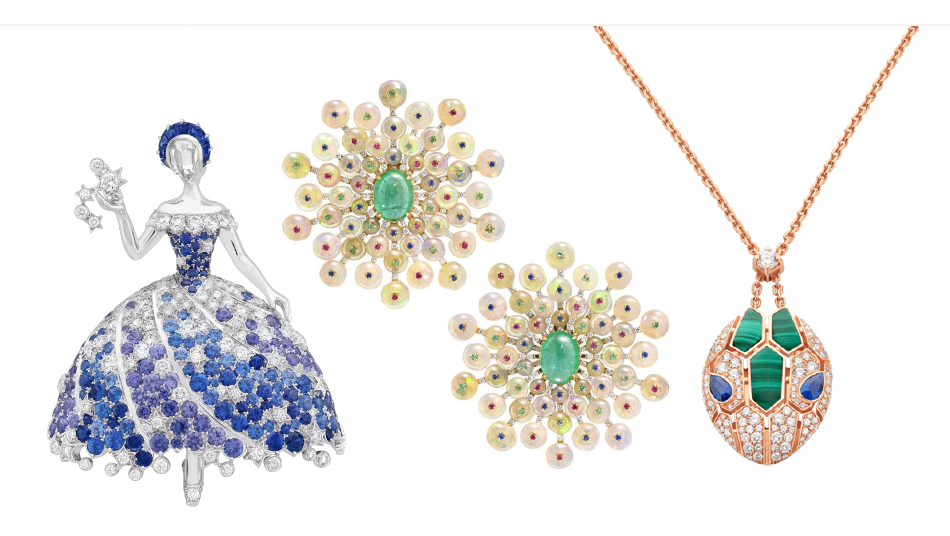 |
| From Left to Right: Van Cleef & Arpels; Sarah Ho; Bulgari; Sapphire Dreams |
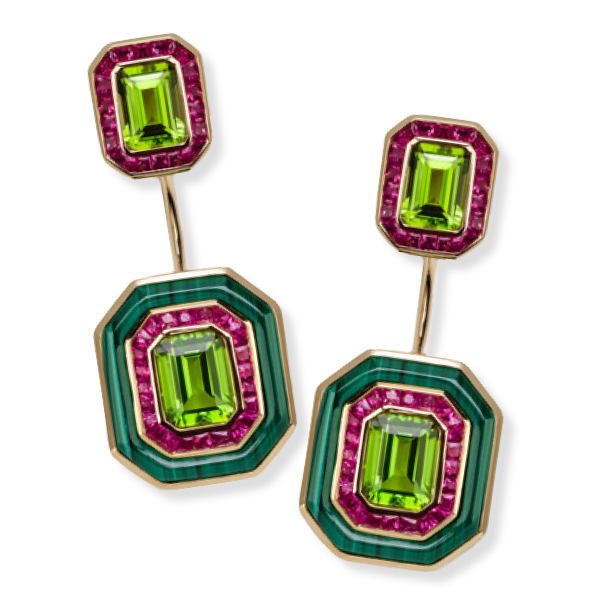 | 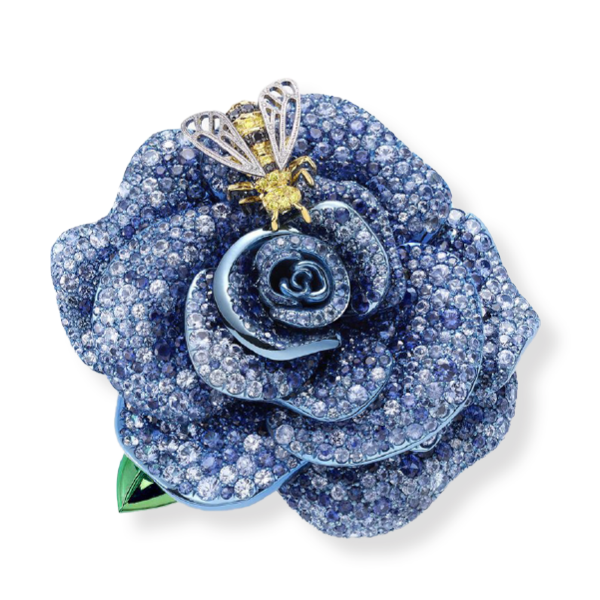 | 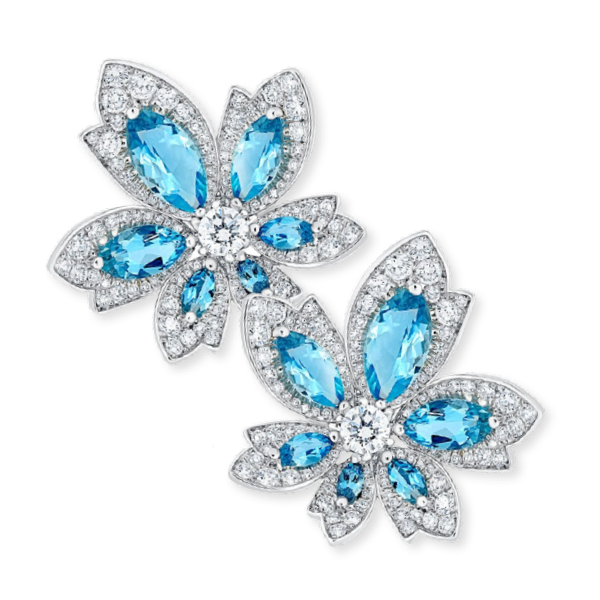 |
Above: Annoushka x Fuli Gemstones | Above: Chopard | Above: David Morris |
Indicolite, verdelite and Paraíba tourmaline
While the red hues of rubellite tourmaline maintain a steady appreciation, the interest and value of blue and green tourmaline was reignited with the discovery of Paraíba tourmaline.
Tourmalines showing unusually striking ‘neon’ colours of blue, green-blue, green and violet first appeared in the jewellery trade in 1989, when a single deposit was unearthed near the Brazilian village of Sao Jose de Batalha in north-central Parai`ba State.
The gems came to be known as Paraíba tourmalines. Such tourmalines are rare, and exhibit a vivid blue and startling glow incomparable to any other gem.
Although uncommon in sizes over 2 carats, these majestic gemstones are always in high demand, attracting extraordinary prices not seen with any other tourmaline variety. Interestingly, the trace element responsible for these exciting colours is copper.
In some cases, the concentration is so high that small inclusions of pure native copper can be found.
While copper is a contributing colouring agent in many other minerals such as turquoise and malachite, it had not been known to colour tourmaline until the discovery of Parai`ba tourmaline.
Typically, iron and chromium induce the blue and green in other coloured tourmaline varieties.
Mined by hand in the copper-rich mountains of Mozambique and Nigeriaare Parai`ba-type’ tourmalines.
Almost identical in chemistry and colour saturation to their Brazilian counterparts, these gems emerged into the market in the early 2000s with large stones, some over 5 carats.
However, some argue the quality and richness of colour of the authentic Brazilian stones are incomparable.
In contrast to Parai`ba tourmaline, the other cool-hued varieties are more readily available and at less extravagant prices.
These gems flaunt trade names such as ‘indicolite’, the name given to a range of blue tourmalines, and ‘verdelite’, the name given to a range of green tourmalines.
Both named varieties are often tinged with blue, green or violet offering a broad spectrum of colours in varying saturations.
Blue tourmalines range from pale icy blue to deep and dark saturated navy blues. Stones that exhibit a dominant blue hue generally attract a higher value.
Some stones are labelled indicolite even when the green predominates, so buyers should value a stone based on its colour rather than its trade name.
Tourmaline’s other varying greens offer a pleasing alternative to the grass green of peridot and the deep, rich green of emerald, the other industry ‘heavyweights’.
These include pastel hues, blue-green ‘teal’ varieties and a rare vivid green referred to as ‘chrome dravite’ – coloured by vanadium, chromium and sometimes both.
Peridot and lapis lazuli
Peridot is the gem-quality variety of olivine and its colour ranges from green, greenish-yellow, yellowish-green, greenish-brown and brown, depending on its chemical composition.
Pure green gemstones are rare and most peridot exhibit a yellowish undertone.
The intensity of peridot’s green hue is determined by the varying amount of iron in its composition; iron influences a yellow- brown tone within the gemstone while traces of chromium and nickel – replacing iron and magnesium – are said to give peridot a bright-green colour.
Intriguingly, pallasites are one kind of stony-iron meteorite that contain abundant crystalline olivine, sometimes of gem-quality peridot – making it an ‘extra- terrestrial’ gemstone!
The crystals are generally small and, due to the high iron content of the surrounding iron-nickel matrix, are typically yellowy-brown in colour.
Some pallasitic peridot specimens are higher in carat weight and present an attractive green colour favourable for faceted gemstones.
The finest examples of peridot are unearthed in Myanmar (Burma) and Pakistan, with the US state Arizona and China producing more reliable commercial quantities; they are also found in Australia, Vietnam, and some African nations.
Admired since the dawn of civilisation, early records indicate the Ancient Egyptians mined a beautiful green gemstone from the island in the Red Sea called Topazios.
The island, now known as St John’s Island, or Zabargad, remains to this day the oldest and longest-known source of gem-quality peridot.
Another gemstone prized in the ancient world is lapis lazuli, often shortened to lapis, which gained its name from Latin and Persian origins – lazhuward meaning ‘blue’ in Persian and lapis meaning ‘stone’ in Latin.
The gem has been highly prized for thousands of years, being used in jewellery, carvings, seals and decorative items.
Lapis lazuli is an aggregate comprised primarily of lazurite, calcite and pyrite. Quality lapis consists mainly of lazurite – which gives the gem its intense blue colour – with small amounts of white calcite and pyrite.
It is the metallic flash of pyrite against the deep blue of lazurite that makes it so attractive to gem collectors and jewellery artists.
Under a microscope, lapis lazuli looks like the night sky – with depths of blue lazurite, a fine white haze of calcite and the starlike sparkle of pyrite.
Lapis ranges in colour from greenish blue to rich royal blue and violet blue. The most prized – and valuable – is an intense royal blue featuring minute gold flashes of pyrite.
Afghanistan is considered the most significant source of quality lapis. The gem has been mined there for thousands of years in a remote and inhospitable region, known historically as Bactria.
Today, other sources are Lake Baikal in Siberia, Chile, Angola, Pakistan, Canada and Colorado in the US.
Jadeite and nephrite
The lustrous texture and luminous colours of polished jade have been prized for thousands of years.
Ancient cultures in North, Central and South America, New Zealand, Asia and Europe valued jade for its beauty, hardness and durability – properties that made it suitable for use in implements, jewellery, regalia and decorative items.
Wearers believed jade endowed them with long life, good health and fortune, and today jade jewellery still has strong traditional associations in many cultures.
The name ‘jade’ is the commercial term used for jadeite and nephrite. Despite their similar appearance, these minerals have distinct gemmological properties.
Both are silicates; jadeite is a sodium and aluminium silicate, while nephrite is a calcium and magnesium silicate. Both are polycrystalline in structure, with many interlocking microscopic crystals, making them some of the toughest materials in the gem world.
So, what is the difference between the two?
Typically, the name jadeite is associated with a rich deep green colour, but the gem is found in many hues and is often mottled. The richer and more even the colour, the higher the value.
In China, jadeite of fine green colour and translucency was once reserved for the Emperor’s court and is known as ‘imperial jade’.
The presence of iron creates the green hue.
Jadeite has a hardness of 6.5-7 on Mohs’ scale, making it suitable for use in a range of jewellery. However, it is the gem’s tenacity and capacity to be carved and fashioned, along with its vitreous lustre, that makes it attractive to jewellers and gem carvers.
With a hardness of 6–6.5 on Mohs’ scale, nephrite is a little softer than jadeite, which has a hardness of 6.5–7. However, it has a higher tenacity and is regarded as the ‘toughest’ of gems.
This property of toughness makes it suitable not only in a range of jewellery, but also for use in gem carvings and decorative items.
Nephrite that is translucent with a solid green colour is the most valuable. Mottling of colour or the presence of dark mineral inclusions lessens the gem’s value.
Nephrite is a more common mineral than jadeite, and its major sources are New Zealand, Mexico, Peru, British Columbia and Taiwan. It is the official state mineral of Wyoming.
To the Maori of New Zealand, nephrite – called pounamu or greenstone – is an important gemstone found on the South Island around Otago.
It has great cultural significance, used not only for adornments but also for practical uses, including making tools and weapons.
GEMSTONE FOCUS
THE Australian sapphire
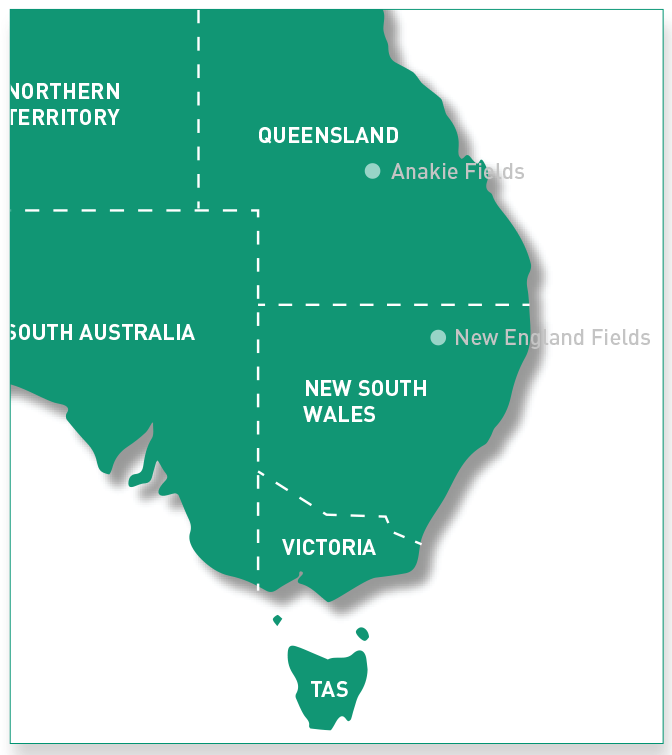
Australian sapphires originated as a result of volcanic eruptions that date back millions of years.
Discovered as crystal formations in ancient riverbeds left behind by creeks and streams, sapphire deposits were found to be concentrated in alluvial gravels, colloquially referred to as 'wash'. 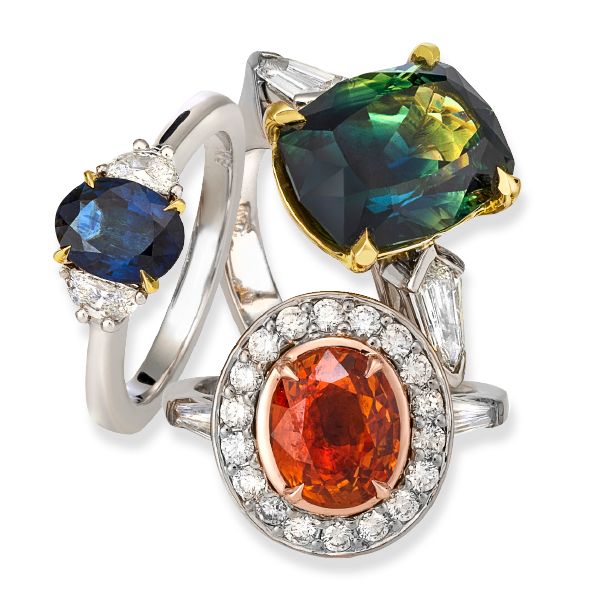 | | Above: Sapphire Dreams |
Today, most of these gems are found in the New England Fields in northern NSW and the Anakie Fields in central Queensland, which are the two major sources of sapphires in Australia. Sapphires are a form of corundum with a chemical formula of Al2O3 – aluminium oxide. Corundum is a material known for its high density, which makes sapphires among the hardest natural minerals in the world, ranking 9 out of 10 on Mohs' hardness scale, second only to diamonds. The word 'sapphire' is derived from sappheiros, which means 'blue stone' in Greek. However, despite the common belief that sapphires only come in a blue colour, that could not be further from the truth. All sapphires are allochromatic, which means they receive their colour from impurities within the crystal structure. Depending on the trace amounts of iron, titanium and nickel, and other elements, sapphires can attain a range of different colours. Australian sapphires are particularly known for deep blue, green, yellow and parti-colour specimens combining blue, yellow and green. Source: SAMS Group Australia |
Read eMag